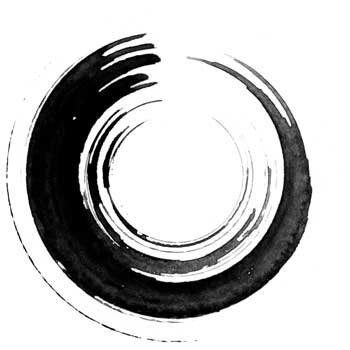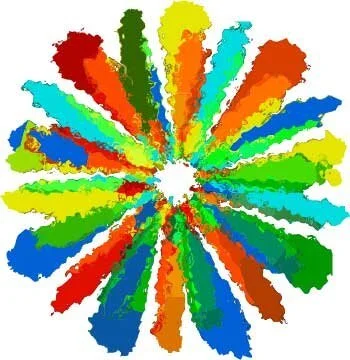Keep your eye on the whole
Note: This essay is part of the upcoming book, "Beautiful Practice."
A human being is part of a whole, called by us the Universe, a part limited in time and space. He experiences himself, his thoughts and feelings, as something separated from the rest, a kind of optical delusion of his consciousness. This delusion is a kind of prison for us, restricting us to our personal desires and to affection for a few persons nearest us. Our task must be to free ourselves from this prison by widening our circles of compassion to embrace all living creatures and the whole of nature in its beauty.
Albert Einstein
It seems like everywhere we go these days, people are talking about integration. We hear it in the world of athletic training, where coaches emphasize the orchestration of long kinetic chains and tell their athletes "Lift the weight with your whole body!" We also hear it in the world of psychotherapy, where counselors encourage their patients to adopt integrative narratives that bring their lives together into a single coherent whole. And we even hear it in unlikely places, where strategists in business, law, education, design and public policy advise us to reach for an integrated "systems approach" to problem solving.
Naturally, this move towards integration has a strong intuitive appeal. All of us desire to be and become one; within ourselves, our bodies, our habitats and our communities. Beginning at birth, we experience a compelling drive to attach to a caregiver; loneliness and isolation loom as a major threat. Even the word disintegration causes us some degree of psychophysical stress. And of course, the word "health" derives from a root word meaning "whole."
As Carl Jung and many observers of the human condition have observed, we all have a natural drive towards integration; no matter how badly we’re injured, distracted, traumatized or dislocated, our bodies and subconscious minds are always seeking a path back to wholeness. So it’s no wonder that teachers, trainers, coaches and mental health professionals across the spectrum are united (or should be united!) in this quest to put things together. When you get right down to it, all of us are in the integration business.
But the curious thing about integration is that there seems to be so many ways to do it. For example, we can seek out vertical integration. This is a non-Cartesian orientation that seeks to put mind and body back together into a single, unitary whole. Descartes, as you recall, was famous for his philosophy of mind-body dualism, the belief that the mind exists and functions separately from the body. This orientation, absurd as it is, lives on in Western culture, especially in our “neck-up” approaches to education, business, and corporate management. What we clearly need is a reunion of mind and body, an embodied experience that respects the totality of thought, sensation, emotion and movement.
Then there’s horizontal integration, a unity of function between left and right brain. This relationship is far from simple and is somewhat controversial, but in essence, each hemisphere has its own aptitude: The left hemisphere specializes in logic, language and linear thinking; it focuses most effectively on objects and is adept at analysis, taxonomy, categorization and hierarchy. In contrast, the right hemisphere is a non-linear, parallel processor. It specializes in metaphor, poetry, holistic orientations and the immediate experience of the deep body. As many scholars have observed, modern Western culture is heavily biased towards the left side of the brain.*
We also seek sensory-motor integration, the ability to coordinate sensory information with muscular contractions across the body. Here we look for communication between the neuro-muscular elements that power our physical movement; our proprioceptive sense of body position and our vestibular sense of balance working together to fire muscle contractions at the right time and in the right intensity. This is the heart of functional training and the key to athletic performance. Unfortunately, many people struggle in this effort; in a world of sedentary occupations and living, physical sensation becomes dormant and disconnected from motor action. The end result is awkward movement, pain and injury.
Of course, we also look for interpersonal integration within couples, families, teams and communities. Obviously, this form of integration is an immense and timeless challenge, but one thing is clear: our ability to enter into quality relationships with one another is far more than an exchange of abstract symbols and patterns of language. Rather, it is a relationship mediated by the entire body, via a system called “the resonance circuit.” Non-verbal cues are picked up by the brain’s mirror neuron system and are sent downwards, through the emotional centers of the brain, into the deep body, the torso and the gut. When we learn to feel this whole-body resonance with other people, we become more adept at integration.
At the same time, we also look for neuro-cognitive integration. In this domain, brain circuits may be more or less integrated with one another, depending on a person’s history and experience. If a person is traumatized in childhood or in combat for example, he or she may disassociate the memory of that event. The neural circuit becomes unlinked from the rest of the brain; the result is a neuro-cognitive island. Under certain conditions, this isolated pattern may be triggered and expressed in inappropriate, out-of-context behaviors. The goal in therapy is to re-integrate these isolated circuits and memories back into the totality of the person’s experience, often through story and narrative.
No matter what the domain, the process of integration is always about getting isolated elements working together. And while each domain requires its own specific strategies, language and techniques, there is nevertheless a certain kind of attention and spirit that underlies all of them.
In the first place, the emphasis is always on relationship, not objects. The more we fixate on individual elements, the more we loose sight of the totality of the system in question. In fact, it may well be the case that individual objects are actually illusions. As Alan Watts put it, "Parts are fictions of language, of the calculus of looking at the world through a net which seems to chop it into bits. Parts exist only for purposes of figuring and describing."
Most importantly, we look for rapport, conversation and communication between elements. The key is sensitivity and a non-judgmental attitude of kindness and inclusion; we welcome the entirety of the system in question. It makes no sense to reject one part of the body, one side of the brain or one dimension of our experience; they are all participants in the whole. Rumi described this spirit perfectly:
This being human is a guest house. Every morning an new arrival.
A joy, a depression, a meanness, some momentary awareness comes as an unexpected visitor.
Welcome and entertain them all! Even if they're a crowd of sorrows, who violently sweep your house empty of its furniture, still, treat each guest honorably. He may be clearing you out for some new delight.
The dark thought, the shame, the malice, meet them at the door laughing, and invite them in.
Welcome the body, welcome the gut. Welcome the activity of the other side of the brain. Welcome the sensations that animate and coordinate your movement. Welcome people as they are. Welcome your history, your stories and your memories.
This, of course, is an ideal attitude to bring, not just to daily life, but to meditation. As we sit with our attention focused on our breath, an astonishing diversity of thoughts, images and emotions will spontaneously appear. If we try to resist, evaluate, judge or select, we simply increase their volume, velocity and their power. Before we know it, our attention has left the breath entirely and we’re off on a journey to somewhere else, lost in the past or future. The key is to welcome it all. Allow the mind to arise and fall away as it will and eventually, it will come to rest.
Whatever the domain, the challenge and wonder of the integrative arts is that they’re never truly complete. In a highly dynamic world, every element and relationship is constantly changing; we can never step into the same system twice. Therefore, the process of integration must be continuous. Every day, indeed every minute of every day, we make adjustments in the flux and flow of muscular action, sensation, brain activity, personal relationship, story and narrative. It’s always a process; the integrator’s work is never done.
So don’t get stuck on any one element or any single object. Sweep your attention over the entire system and keep adjusting. With time and practice, integration will feed off itself and you'll move towards a state of one.
* see The Master and His Emissary: The Divided Brain and the Making of the Western World by Iain McGilchrist



